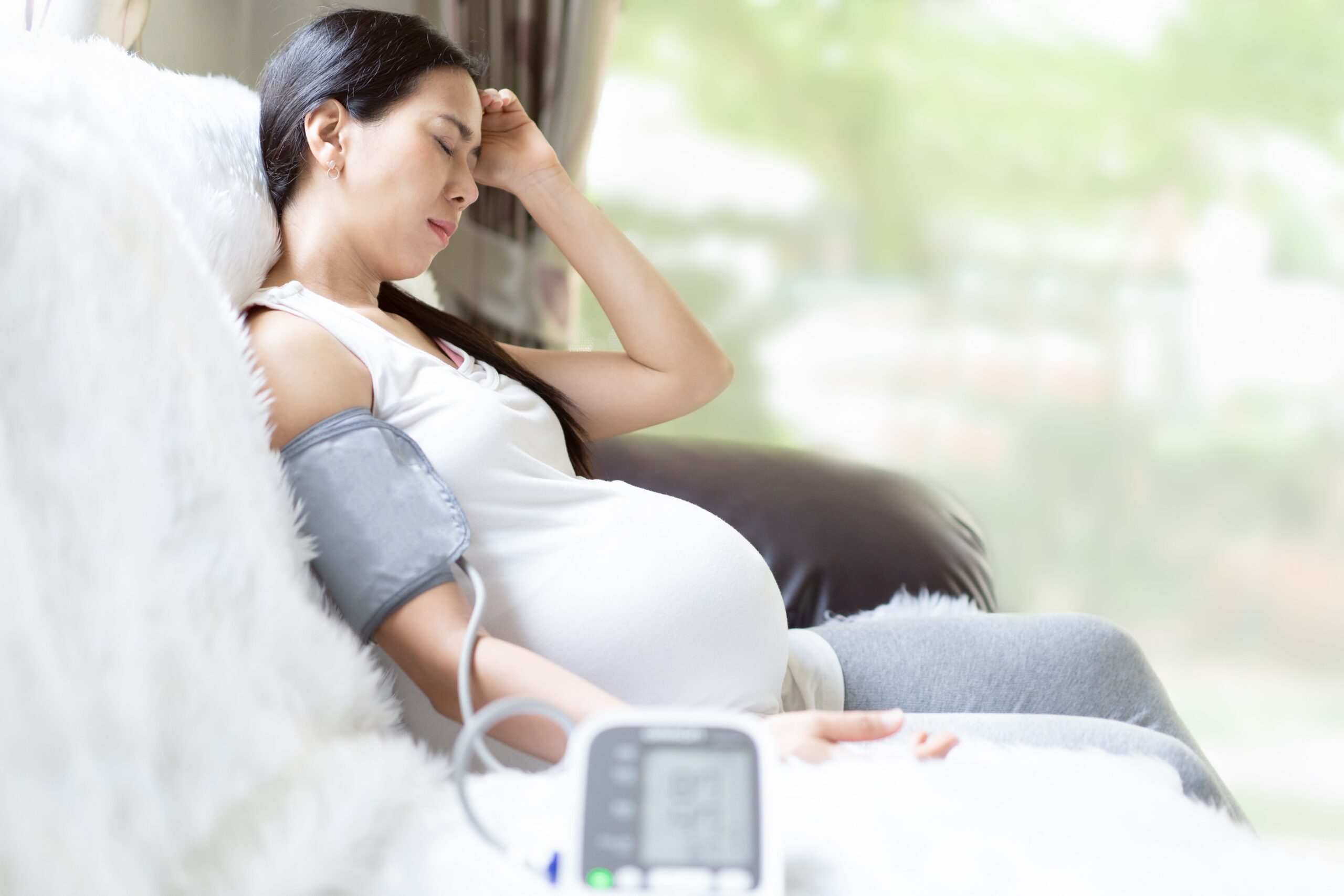Preeclampsia and long-term risk: Study reveals links to venous thromboembolism | Image Credit: © Sukjai Photo – © Sukjai Photo – stock.adobe.com.

Preeclampsia significantly increases the risk of venous thromboembolism (VTE) among pregnant individuals, according to a recent study published in JAMA Network Open.
Takeaways
- The study underscores that preeclampsia significantly raises the risk of venous thromboembolism (VTE) in pregnant individuals, establishing a connection between these two health conditions.
- With 4% to 5% of pregnancies worldwide affected by preeclampsia, the condition is a substantial contributor to maternal health complications. This emphasizes the need for awareness and proactive identification of women at increased risk.
- Apart from preeclampsia, the study identifies various risk factors for VTE, including cancer, obesity, inflammatory and autoimmune diseases, heart failure, and venous insufficiency. Recognizing these factors is crucial for maternal health management.
- The research indicates that the association between preeclampsia and VTE extends beyond the pregnancy period, emphasizing the long-term impact of preeclampsia on maternal health. This insight is vital for developing comprehensive healthcare strategies.
- The study concludes by suggesting the necessity for additional research on preeclampsia prevention and treatment. This implies that understanding and addressing preeclampsia’s implications could contribute to improved maternal health outcomes.
Worldwide, 4% to 5% of pregnancies are impacted by preeclampsia, defined by new-onset hypertension and multiorgan involvement. Endothelial dysfunction influences preeclampsia risk, and thrombophilia has been associated with increased risks of preeclampsia and VTE.
Other risk factors of VTE include cancer, obesity, inflammatory and autoimmune diseases, heart failure, and venous insufficiency. VTE is one of the most common causes of maternal morbidity, making it vital to identify women at increased risk.
Data on the association between preeclampsia and VTE is conflicting, with some studies reporting an association during pregnancy and others only in the puerperium. Investigators conducted a study to determine the association between preeclampsia and VTE during pregnancy.
Five Danish registries were evaluated for data: the Danish National Patient Registry, the Danish Civil Registration System, the Danish Medical Birth Register, Danish National Prescription Registry, and Danish Register of Causes of Death. Participants included Danish women with their first birth between January 1, 1997, and December 31, 2016.
Preeclampsia included preeclampsia, eclampsia, or hemodialysis, elevated liver enzymes, and low platelets syndrome diagnosis using International Statistical Classification of Diseases and Related Health Problems, Tenth Revision (ICD-10) codes. Early onset was considered onset before 34 weeks’ gestation, and late onset 34 weeks or later.
Incident VTE was the primary outcome of the analysis, defined as pulmonary embolism and deep vein thrombosis identified using ICD-10 codes. Covariates included thrombophilia, cancer, obesity, heart failure, venous insufficiency, and inflammatory and autoimmune diseases.
There were 522,545 women included in the final analysis, aged a median 28 years. Of the 4.5% of patients diagnosed with preeclampsia during their primiparous pregnancy, 8.9% had early onset preeclampsia.
Preeclampsia was associated with increased comorbidity burden compared to no preeclampsia, with diabetes rates of 3.4% vs 1.5% and inflammatory and autoimmune diseases rates of 3.7% vs 2%.
VTE was reported in 0.9% of women across a 10.2-year follow-up period, with a median time from pregnancy to VTE incidence of 5.8 years. A significant association was observed between preeclampsia and VTE incidence, with an incidence rate (IR) of 448.8 per 1000 patient-years, compared to 309.6 per 1000 patient-years in patients without preeclampsia.
Rates of deep vein thrombosis were also significantly greater among patients with preeclampsia, with an adjusted hazard ratio (HR) of 1.49 compared to patients without preeclampsia. Additional HRs included 1.36 for pulmonary embolism and 1.43 for VTE.
Death was reported in 0.4% of women, with IRs of 175.1 in women with preeclampsia vs 128.7 in women without preeclampsia. Similar risks were observed among women with preeclampsia and VTE compared to women without preeclampsia and VTE, at 3.1% and 3.4% respectively.
These results indicated preeclampsia is associated with long-term VTE risk. Investigators recommended further research be conducted on preeclampsia prevention and treatment.
Reference
Havers-Borgersen E, Butt JH, Johansen M, et al. Preeclampsia and long-term risk of venous thromboembolism. JAMA Netw Open. 2023;6(11):e2343804. doi:10.1001/jamanetworkopen.2023.43804




